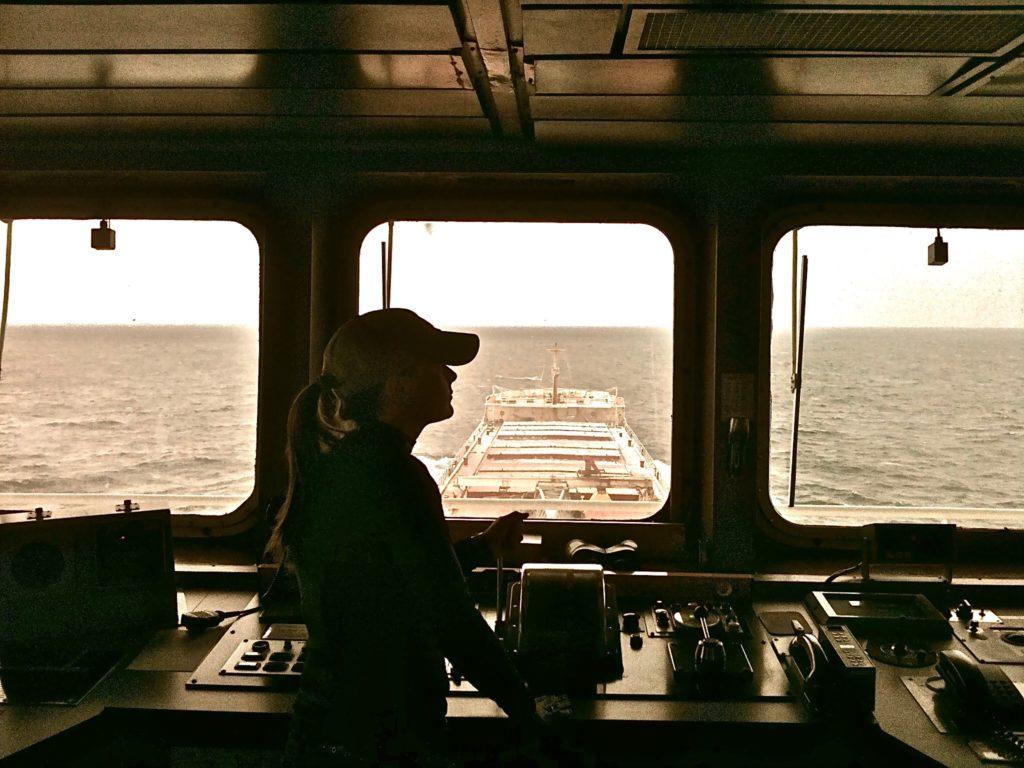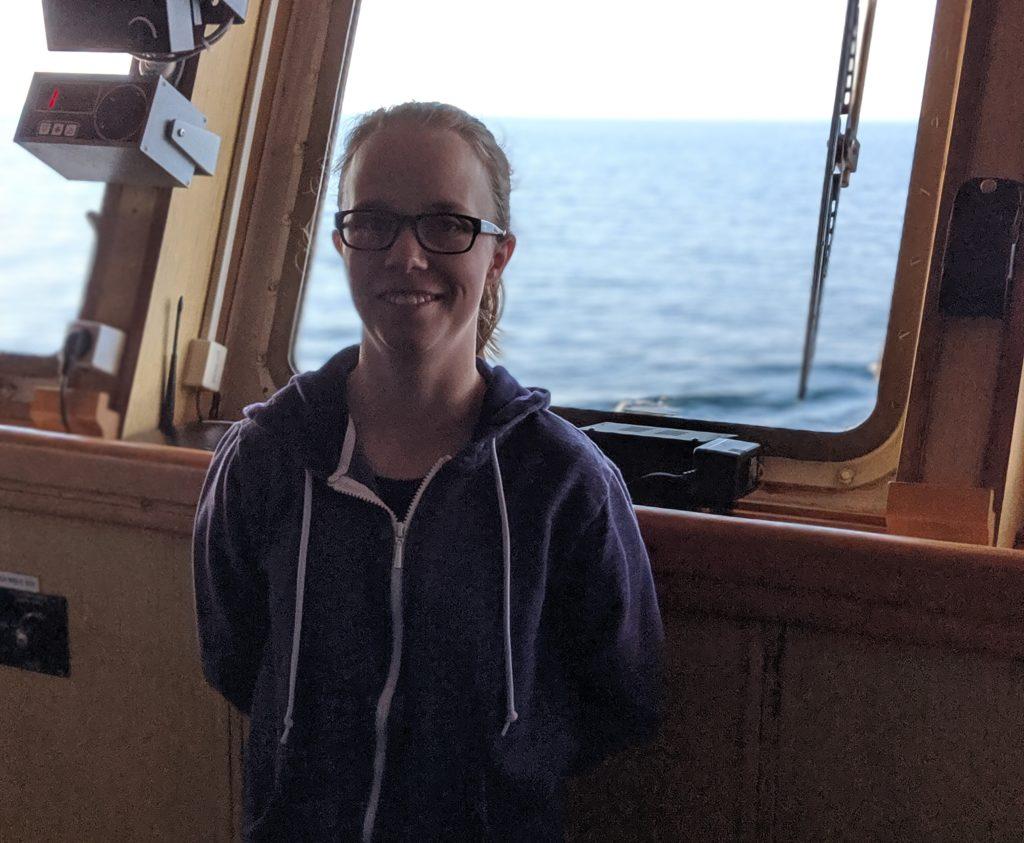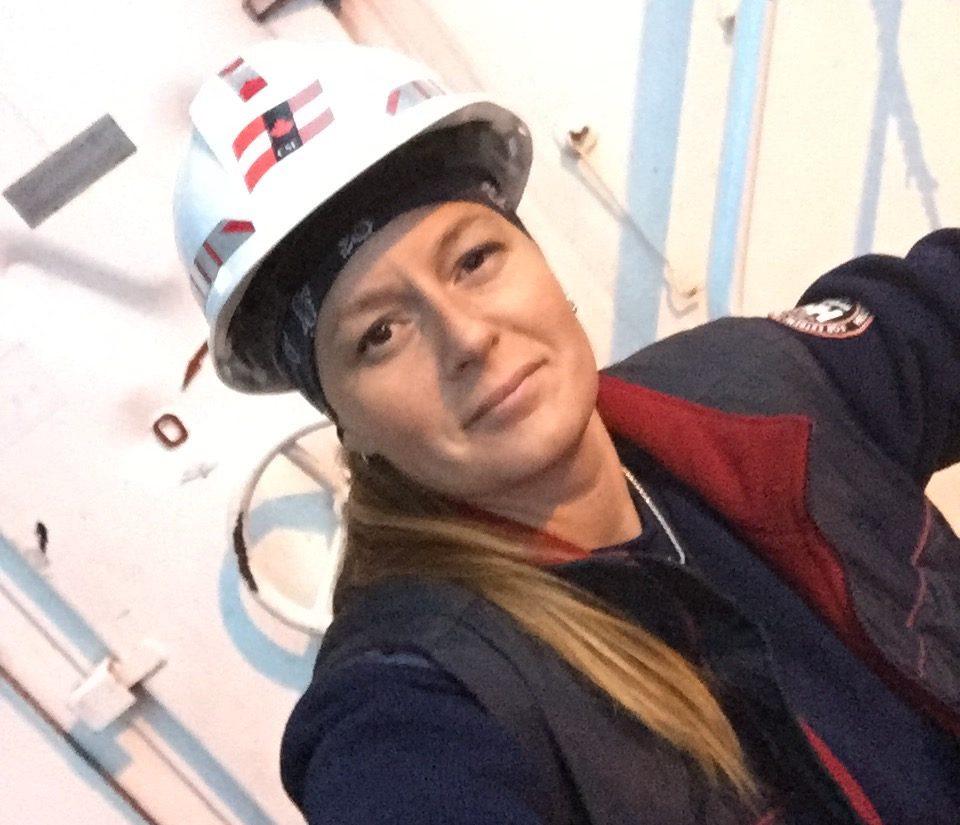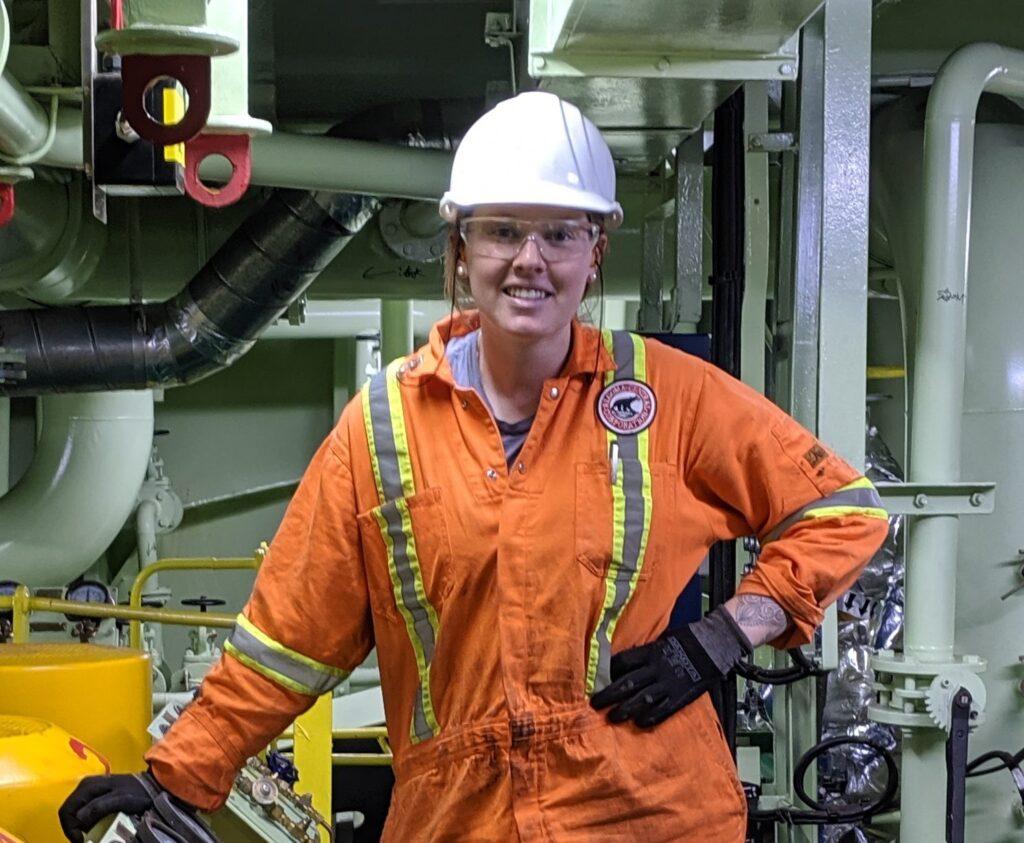
Today, women represent only two percent of the world’s 1.2 million seafarers. To help increase these numbers, Canadian shipowners as well as international shipping organizations have launched new initiatives to highlight career opportunities for women as well as the contributions they are already making in a wide range of maritime professions.
For Third Mate Denna Trachsel, joining the commercial marine shipping industry and the crew of the Algoma Discovery was an easy choice.
“It’s incredibly rewarding to be able to navigate a ship through different challenging waters and channels,” the 27-year-old explains. She goes on to list a number of other attractions – good pay, excellent career advancement opportunities, the unique workplace environment. “My favourite place is down in the Seaway near Brockville, the 1000 islands. You can’t beat that view. We’re getting paid to see views that others pay to see.”
Despite Denna’s enthusiasm and the many perks marine shipping offers, however, women remain underrepresented, especially onboard ships. Today, women represent only two percent of the world’s 1.2 million seafarers. To help increase these numbers, Canadian shipowners as well as international shipping organizations have launched new initiatives to highlight career opportunities for women as well as the contributions they are already making in a wide range of maritime professions.

Denna Trachsel, Third Mate, Algoma Discovery
The United Nations’ International Maritime Organization has made the theme of its annual International Day of the Seafarer celebrated June 25th, “I am on Board with Gender Equality,” with a social media campaign designed for both men and women to show their solidarity for gender equality in seafaring.
Later this autumn, the theme of the IMO’s World Maritime Day will be Empowering Women in the Maritime Community. IMO is supporting gender equality and the empowerment of women through gender specific fellowships; by facilitating access to high-level technical training for women in the maritime sector in developing countries; and creating the environment in which women are identified and selected for career development opportunities in maritime administrations, ports and maritime training institutes.
Closer to home, Canadian ship operators are also increasing their efforts.
“CSL is currently designing a comprehensive action plan to address workplace diversity and encourage more women to choose maritime careers,” says Martine Rivard, Chief HR Officer at Montreal-headquartered CSL Group, which employs 1500 shore and onboard personnel worldwide. CSL operates 18 Canadian-crewed ships in the Great Lakes, St. Lawrence and east coast. “Over the past few years, we have been successful in reaching nearly 50-50 gender parity in our offices at all levels of the organization, including on our Executive Committee. Our focus is now on improving gender equality and diversity on our ships.”
There are many good reasons for increasing gender diversity both on board and in the office, says Nathalie Sykora, Senior Vice President, of CSL’s Global Operations. “Our goal is to have women hold 50 per cent of positions in the maritime industry because they comprise 50 per cent of the population. Diverse groups of people bring a greater variety of experience and different perspectives, which in turn lead to more thoughtful and better decision-making,” she explains. “We are currently in a market labour shortage and industry needs to attract more people. If we don’t encourage women to join this industry, we are limiting our talent pool.”
At St. Catharines-based Algoma Central Corporation, which owns the largest fleet of dry and liquid bulk carriers operating on the Great Lakes – St. Lawrence waterway, Senior Manager of Fleet Personnel Brooke Cameron says that the company has been analysing what attracts, and then retains, women to shipboard positions. One of the biggest challenges is work-life balance.
“Our positions require our shipboard employees to be away “at sea” sometimes two or three months at a time before the employee goes home,” Cameron explains. “Many women, and in fact, many people in general do not want to be away from home for extended periods of time thus limiting our pool of candidates.”
To address this, Algoma worked closely with its labour partners to develop an improved leave system in 2018, with a consistent, predictable schedule that reduces the duration of time at work and away from home as well as increasing the frequency of scheduled time off.
“The intent of the leave system is to provide all officers with a better quality of life in an effort to retain and attract officers currently in the industry as well as open the doors to others, including more women, to join the marine industry,” says Cameron.
Algoma also provides enhanced support for its female shipboard Officers and Managers who want to have a family. “We work with them to adjust their work schedule to either provide more work opportunities enabling them to earn a higher income before they go off or alternatively, allow them to work less if they don’t feel comfortable working as much due to health concerns and comfort. Since the vessel is constantly moving and these women are away from their family doctors, if they wish, we can also book local doctors’ appointments during their pregnancy. We also offer extended time off beyond what is covered under maternity/paternity benefits so they can have additional time at home and still have a career to come back to.”
Having had success in attracting more women to their onboard positions, Algoma is also developing mentoring, sponsorship and coaching programmes to help more women advance in its organization. In 2018, for example, it sponsored seven employees as well as seven cadets from maritime schools across Canada to attend the 10th annual Women on the Water Conference held by Maine Maritime Academy.
“This important event allows females in the maritime industry to network with industry leaders, possible future employers, maritime professionals, and fellow female mariners from across North America,” says Cameron. “Attendees stressed the importance of being able to meet and connect with other women who understand what life is like as a female living on board in a male dominated industry.
Canadian shipowners also work closely with the country’s maritime colleges, providing cadets with “real life” training onboard their vessels and hosting career fairs and marketing materials targeted at all groups, including those that are underrepresented in the industry.
Owen Sound-based Georgian College, for example, actively promotes its marine navigation and engineering programs to women by having its women instructors and cadets attend open houses and other recruitment activities to answer questions about the industry. For each new cohort of 48 students in the two programs, it gets between 2- 8 female students.
However, everyone agrees that more has to be done to educate young people about what marine shipping has to offer. As CSL’s Sykora puts it: “We need to do a much better job of raising awareness about and promoting maritime careers not only to young people, but also to guidance counsellors, teachers and parents. Young women need to understand the world of opportunities that exist in the maritime industry and the many benefits a seafaring career offers.”

Canada Steamship Lines Captain Anita Lambe
The day Anita Lambe stepped aboard the MV Pineglen as a first-year nautical cadet, she stood at the cusp of a career change that has culminated in her position as a Captain with CSL.
“To say I was in awe is an understatement,” says Lambe, who boarded the Pineglen at the St. Lambert lock in Montreal. “I was overwhelmed and excited at the thought of learning how the Masters maneuvered these great vessels in such confined waters.”
Previously a massage therapist, it was Lambe’s dream to pilot large ships on the Great Lakes. Just 13 years after her first experience as a cadet, she is doing just that.
After three years as a cadet, where she also served aboard the CSL Tadoussac and the CSL Atlantic Huron, she began her first watch as a third officer in July 2009 aboard the MV Frontenac.
She chose Canada Steamship Lines because of its “immense history in this great nation of ours,” Lambe says. “From ship to shore, I have had the privilege of working with some of the best in our industry.”
Lambe credits her success to the motivation she received as a cadet from the “amazing” crews and captains who allowed her to learn from her mistakes and keep on going.
Last December, Lambe received her first command as temporary Captain aboard the CSL Welland. This year, she will serve as a relief Captain on the Whitefish Bay and the Thunder Bay. She looks forward to passing on to her crews the knowledge given her so generously.
“I would encourage any woman with drive, a strong work ethic, and a good sense of humour to get into this industry,” Lambe says. “This has been an amazing human experience,” she says.

Algoma Central Corporation 4th Engineer Cassandra Ritchie
When 4thEngineer Cassandra Ritchie is on watch, she is responsible for the smooth operation of all the machinery in the Algoma Conveyor engine room.
“Everything is so big. The engine room is four stories below the waterline, people are always amazed when they see it,” says 24-year-old Ritchie. “I just love this job. It’s not just a job, it’s a way of life. You work, you sleep, you live, you make friends.”
Ritchie grew up in British Columbia surrounded by machinery at the scrap and tug company that employed her father. She originally studied mechanical engineering but was attracted to the marine engineering program at the British Columbia Institute of Technology due to the hands-on nature of working on ship systems.
When not on watch, she maintains all of the pumps in the engine room, deck cranes and other equipment, cabin and galley equipment, the marine sanitation device and incinerator.
While she can be on board the ship a couple of months at a time, she makes maximum use of the four to five months she has off on leave every year. “I do a lot of travelling. This winter I was in Las Vegas, then Africa where I climbed Mount Kilimanjaro and then I spent several weeks visiting friends in Australia. Last year, my boyfriend and I went to Peru to see Machu Picchu.”
Ritchie says, right now, she is the only woman on the Algoma Conveyor but she has worked with women on other Algoma ships and formed really close friendships. She would encourage more women to take a chance on the industry.
“I would say just go for it. People that I’ve worked with have been so supportive and encouraging. I know that other women could do it as well.”
Ritchie believes showcasing women already working in the industry will help bring others on board. “It’s not really talked about that much. You don’t see women captains in Hollywood films or other cultural references – marine shipping has been depicted as a male industry. But that’s starting to change. I was just reading the other day about the first Canadian woman to become a Captain of a major cruise ship operator. I think the more women are exposed to other women working in this industry, the more they will see the opportunity for themselves.”